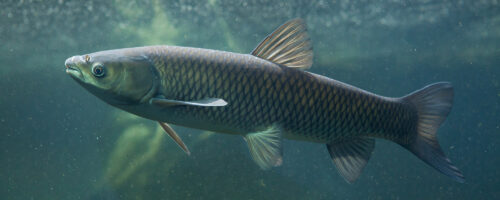The drought we have been experiencing is of great concern to most land and resource managers. Wildlife species found in Noble’s Texas and Oklahoma service area have dealt with and survived drought before, and, as is often the case, the key to maintaining viable wildlife populations on any area is maintaining good habitat for the species of concern. As species requirements increase in variability, or when multiple species are involved, habitat diversity becomes increasingly important.
With that generalization stated, I will focus on white-tailed deer and the effects the current drought might have on their populations and management. White-tailed deer have survived and flourished in our region regardless of what Mother Nature has thrown at them. They have survived snow storms, ice storms, tornadoes, hurricanes, floods and droughts but is this drought going to hurt them? Most people agree this drought is a little different from most. In my almost 25 years of being in Oklahoma, I cannot recall a drought with the intensity or longevity of the one we are experiencing. Hot, dry summers are the norm for Oklahoma and north-central Texas, and deer have evolved and adapted to cope with them. Deer, like all living organisms, require water, but under normal conditions, water is seldom limiting in our area. The thing that is different about this drought is that it did not begin in the hot, dry months of summer it began last fall. Remember last year’s winter pastures? There were not any. The lack of rainfall continued throughout the spring, accompanied by unusually high temperatures. This certainly is not “normal.” But back to the question: Will this affect the deer population?
The bottom line is that this drought will probably not have a long-term effect on deer populations, but it certainly has the potential to have some short-term effects.
Generally speaking, even though many ponds have dried up, and free-standing water is not as plentiful or widely distributed as it is in average rainfall years, drinking water is still not a limiting factor. Deer typically range over a fairly large area relative to water source abundance in our area. They might have to travel a little farther to access water or concentrate their activity in areas with available water, but, in most cases, they can find water.
The most negative impact the drought has had on deer relates to the subsequent lack of forage production, particularly forb production. Generally, forb availability and quality is high during spring and early summer and declines during the latter part of summer. This year, many areas saw very little forb production during the spring or summer. This is a critical time period for females producing and raising fawns, when their protein requirements are relatively high. Lack of suitable-quality forage probably will not have a large impact on adult survival, but if does cannot acquire adequate nutrients, fawn survival and recruitment may be adversely impacted. In addition, a drought-induced reduction in herbaceous growth will result in reduced herbaceous cover, which, in turn, may lower fawn survival due to increased coyote predation of fawns.
The lack of fawn survival and recruitment can have significant management implications. Most resource managers in Noble’s service area that are seriously making efforts to manage white-tailed deer on their land holdings are aware of the need to harvest female deer for population control. With varying degrees of success, many managers have attempted a “doe harvest” of some magnitude.
A common “knee-jerk” reaction in response to reduced fawn survival is to commensurately decrease doe harvest. However, if like most people, your past attempts at harvesting adequate numbers of does have fallen short of the desired goal, then this might be the year to stay the course, harvest some does and really have an impact. If your management goal is to “grow” your deer herd, then you probably want to reduce or eliminate doe harvest this season.


Comment